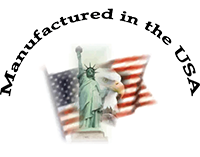 Central Valley Model Works
|
||||||

|
Using CVT; Tips and suggestions. Jack Parker 2002
Central Valley Ties and Switch Ties are precision molded from styrene with tie plate detail that insures accurate gauging, and rail location. To remove CVT from the sprue, scissors, or better yet, a large pizza cutter works really well! The track tie sections can then be glued together making continuous lengths. These lengths can be placed on the roadbed and adjusted using the sighting detail on the center of the CVT tie sections and switch ties. These sights allow easy alignment of the track to a centerline that is drawn on the roadbed or yard area surface. Included with the switch kits and switch tie packs are diagrams showing the average diverting radius for the corresponding switch angle. This information should help you to layout yard ladder tracks and crossovers. Of course, when using CVT switch kits and or switch ties, free flowing curved switch work is possible. When gluing the ties and tie strip to the roadbed, there are several methods that can be used. Water based carpenter glues can probably be used. However, the styrene does not really stick with these glues. Considerably more holding power is possible using varnish. A thick coat of varnish not only holds the ties, but also helps seal soft absorbent wallboard types of roadbed. On harder less absorbent materials such as plywood, or pine, a small amount of lacquer thinner or M. E. K. (Keytone) applied with a small brush to the ends of the ties and roadbed works. Some of the styrene dissolves and becomes the glue! This process requires care in handling the toxic and volatile materials but it is very fast and I personally use it. Only a couple of ounces of solvent are open to the air at any given time to minimize the exposure from an accidental spill. These solvents cannot be used with or around foam core or Styrofoam. Water base glues and/or varnish can be used. Although the ties could be painted before installation, painting when they are down is probably better. Almost any flat finish model paint will work just fine. Various browns, tans, and grays will look right. Tie plates can be painted (with the rail sides) various rust colors, including Tuscan red or boxcar red. Although the rail can be spiked, I have found that gluing the rail with "Barge®" all-purpose cement works very well. With only very occasional spiking around rail gaps or switch points, the "Barge®" on my personal layout has held for over fifteen years. "Barge®" is sold through hardware stores in tubes but is more widely known in the shoe repair and leather-crafting world. Using "Barge®", other glues, or contact cements, allows the use of smaller rail than even code 70. For sidings or even main trackage on branch or short line railroads in H-O scale, code 55 works quite well. I have used a lot of code 55 on CVT in yards and sidings with "Barge®" cement. QUESTIONS AND ANWSERS FOR CVT PRODUCTS updated: 10/24/2010Q: Do you soldier the rail joiners and feeder wires to the track before or after gluing the track to the ties? A: No, I do not solder the rail joiners, and I solder the feeder wires to the rails after they are in place and secured to the CVT tie material. Q: How long a section of rail do you normally glue down at a time? A: More often I do 20ft. sections of track per session. When the room ventilation is adequate, at times I have put down over 100ft. in a single afternoon. Q: Do you normally put any weight on the track to hold it down while the glue is drying? A: When I am laying long lengths (6-20 ft.) I use weights to hold the rails down while the drying takes place. Q: Can you tell me the best method for gluing rail to ties? A: I form the rail in my fingers to the approximate radii and fit into the tie plates. While holding the rail in place I apply a small amount of MEK to the rail base and tie. It takes a few seconds for it to set and if I am laying long lengths (6-20 ft.) I use weights to hold the rails down while the drying takes place. Q: Is it best to apply the Barge to the track or the ties? A: Using a "Q-tip", I spread thinned ( 2-1 or 3-1 ) Barge® cement to the rail base and let dry. Q: When curving a CVT switch, what is the minimum radius you would recommend? A: I do not know what the limit for any switch is. I recommend modlers use the least amount of curvature. In other words, the largest radius possible is always the best. Q: Do the switch kit ties come in main and branch thickness? A: The Switch ties are split in thickness between the Branch and Mainline tie thickness (Switch tie: 0.07", Mainline tie: 0.075", Branch Line tie: 0.065") Q: Why do you NOT use a brown color for the ties/do you have any plans for brown? A: Most people end up painting their ties anyway's and we have too many different opinions as what color they should be. Personally I like the black for a base so when I lightly spray them from an angle, the black in the wood grain comes out like creosote in the splits of prototype trackage. Q: I assume your code 81 rail fits the code 83 switch kits? A: Yes the code 81 rail fits very well and is preferred with the CVT track system for mainline use in the late steam to diesel era. Although the modeler will need to file the top surface a bit more to bring the 0.083” (code 83) down to 0.081” (code 81). The kits points, and frogs are actually 0.084 / 0.087 to allow for variations in multiple rail manufactures. With the code 81 rail and RP25 wheel sets the flange-way in the frog may need to be cut deeper with a file or sand paper (240/320) wrapped around a thin metal blade. Q: Considering the rail is glued to the strips, what about expansion and contraction concerns? A: The CVT system should be gapped, for expansion / contraction like normal. We recommend using Barge cement (a shoe and leather industry product) because of its ability to stretch and shrink with out loosing strength over many cycles. Personally we did use spikes at every rail joint (atlas N joiners for code 81 rail) and also along the rail about every 10” (ten inches) or so. We also prefer spiking the closure rails at the frog and point area, we spike next to the throw-bar (to re-enforce machine pressure) and spike the frog point rails that exit the switch. Q: How well does your track and switches work on AMI roadbed? A: Because of the need for the modeler to press downward on the CVT while installing ties, gluing rail, spiking rail, blending rail (with file), and drilling (for wiring) the AMI road bed has proven to be completely unsuitable for both trouble-free installation and operation with CVT or any hand-laid model track project. The AMI roadbed will not maintain a consistence vertical plane for the ties which in result will effectively cause a roller-coaster effect with your trackage. Q: Is the 1604 switch stand kit operational? A: No, the kit is designed to only replicate an early 60’s style. When used with the CVT Switch ties the target can be made to rotate 85 deg. Q: Do you have in the works any crossovers, double slips / or wyes? A: No not at this time, although you can bend the CVT switch into a wye. Q: In the instructions for the Turnout, it gives the average diverging radius, - Does this mean that this radius is the tightest radius that you can use for this switch? A: The turnout can be curved to much tighter radii than your equipment will operate on. This could result in shorting, derailment and damage to your equipment. Other effects include un-desirable distortion of the arc along the stock rails right-of way. Q: When using a 1/2" foam sub base, what rail joiners and spikes should I use? A: Micro Engineering rail joiners work fine but the foam sub base--I just don't know. I we use a much stouter material. Barge and like products sharing similar solvents will dissolve Styrofoam materials. Styrofoam board (foam-core) with paper on both sides will reduce the reaction when glues are applied in modest amounts. Q: When using Micro-Engineering Code 70 and Code 55 rail. Will these properly gauge on your tie strips? A: Micro Engineering Code 70 rail works flawlessly. The 55 may seem loose, but don't get uptight,. because laws of averages and combined tolerances provide excellent operation with only an occasional adjustment during installation.
Thank you for visiting
Central Valley Model Works, Inc. © 2004-2026 About us | Contact | Site Map | Terms of use |
| ||||


